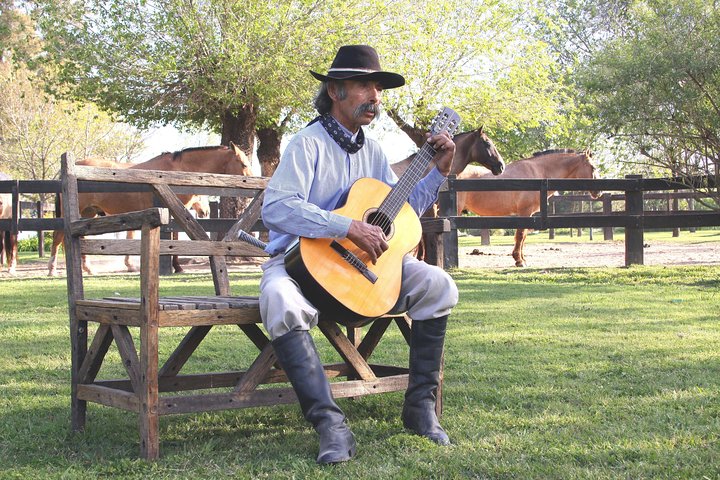Discovering the Heart of Gaucho Culture in San Antonio de Areco
Drawn by the allure of gaucho culture and the promise of a countryside escape, I embarked on a journey to San Antonio de Areco. What awaited was a profound connection to the land and its traditions.
Embracing the Spirit of the Pampas
As I stepped off the bus in San Antonio de Areco, the crisp air of the Argentine countryside filled my lungs, and I felt an immediate connection to the land. Known for its rich gaucho culture, this quaint town is a living testament to Argentina’s rural heritage. The cobblestone streets and colonial architecture whispered stories of a bygone era, and I was eager to immerse myself in the traditions that have shaped this region.
My first stop was the Estancia El Ombu de Areco, a sprawling ranch that seemed to stretch endlessly into the horizon. The estancia is a sanctuary for those seeking to understand the gaucho way of life. As I wandered through the grounds, I was greeted by the sight of horses grazing freely, their silhouettes framed against the vast open sky. The connection between the gauchos and their horses is palpable, a bond forged through generations of shared labor and mutual respect.
The highlight of my day was a horseback ride through the pampas. As we trotted along the trails, the landscape unfolded like a painting, with golden fields swaying in the breeze and the distant hum of cicadas providing a natural soundtrack. It was a moment of pure serenity, a reminder of the simple beauty that nature offers when we take the time to appreciate it.
A Taste of Tradition
No visit to San Antonio de Areco would be complete without indulging in the famous Argentine asado. At the estancia, I was treated to a feast that celebrated the flavors of the land. The aroma of sizzling meat filled the air as the asador expertly tended to the grill, turning each cut with precision and care.
As I savored each bite, I couldn’t help but reflect on the importance of sustainable farming practices. The meat was sourced from local cattle, raised on the very pastures we had ridden through earlier. It was a testament to the harmony that can exist between humans and nature when we choose to respect and nurture the environment.
The meal was accompanied by lively conversations with fellow travelers and locals, each sharing their own stories and experiences. It was a reminder of the power of food to bring people together, transcending cultural and linguistic barriers.
A Glimpse into Gaucho Life
The following day, I had the opportunity to delve deeper into the gaucho culture with a visit to the Ricardo Güiraldes Gaucho Museum. Named after the famous Argentine writer, the museum offers a fascinating insight into the lives of these iconic figures.
The exhibits showcased traditional gaucho attire, tools, and artifacts, each piece telling a story of resilience and adaptability. I was particularly drawn to the intricate silverwork on display, a testament to the craftsmanship that has been passed down through generations.
As I wandered through the museum, I was struck by the parallels between the gauchos’ relationship with the land and my own work in conservation. Both are rooted in a deep respect for nature and a commitment to preserving it for future generations. It was a poignant reminder of the interconnectedness of all living things and the responsibility we share in protecting our planet.
Leaving San Antonio de Areco, I felt a renewed sense of purpose. The experience had not only enriched my understanding of Argentine culture but had also reinforced my commitment to advocating for sustainable practices. The gauchos’ way of life is a testament to the beauty and resilience of nature, a lesson that I carry with me as I continue my journey as a travel writer and conservationist.









































